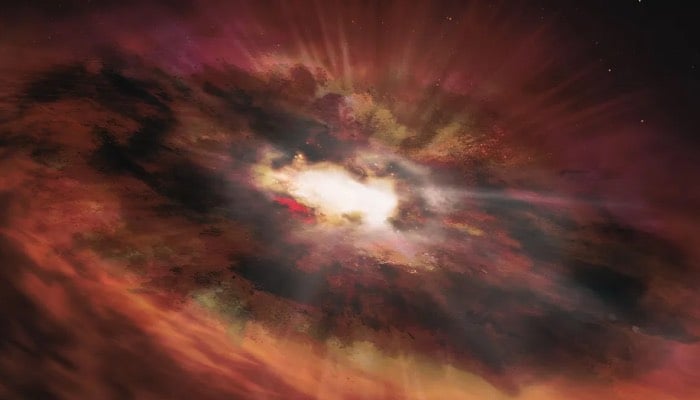
A groundbreaking discovery by an international team of scientists led by Newcastle University has revealed unexpected details about the dust surrounding a supermassive black hole in the galaxy ESO 428-G14, located 70 million light-years away.
Using the James Webb Space Telescope (JWST), the researchers found that the dust is not heated by radiation from the black hole as previously thought. Instead, it is warmed by high-energy gas collisions, or shocks, moving at nearly the speed of light.
This research, published in the Monthly Notices of the Royal Astronomical Society, was led by Houda Haidar, a Ph.D. student at Newcastle University’s School of Mathematics, Statistics, and Physics.
Haidar's team is part of the Galactic Activity, Torus, and Outflow Survey (GATOS), which examines the centers of nearby galaxies using JWST.
The new images from JWST show that the dust aligns with the radio jet originating from the black hole, suggesting that the jet may be responsible for heating and shaping the dust.

Dr. David Rosario, a senior lecturer at Newcastle University and co-author of the study, explained, "The role of radio jets in transferring energy to their surroundings has been debated. This finding challenges previous understandings and highlights the significant impact of these jets."















